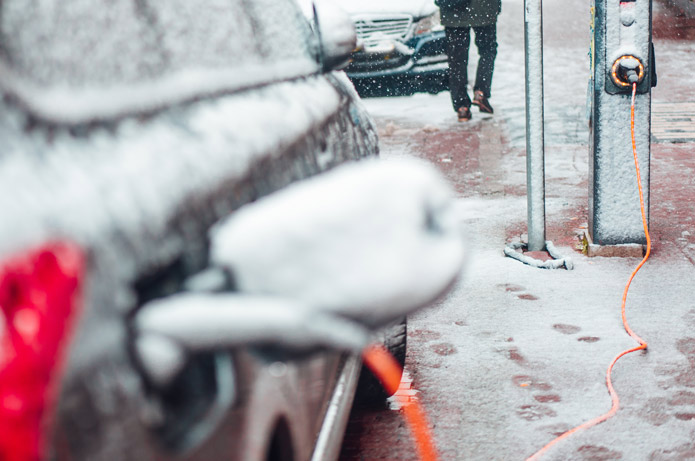Magazine
Electric vehicles in winter
Tips for driving your electric vehicle during the winter
- Why do electric vehicles (EV) have less mileage range in winter?
- How to get the most out of your EV in colder temperatures
- Driving in the snow
As sales for EVs continue to climb, it’s important to drivers to understand why their EV isn’t
managing to travel as many miles before needing to be recharged during the winter.
Essentially, the cold weather impacts the battery performance because it relies on chemical
reactions to store and release electricity. Lithium-ion batteries – which are the most
common cells used in EVs – work when lithium ions move from the anode to the cathode,
but cold slows this process down and restricts battery performance, therefore, this can
reduce your EV’s winter range.
However, there are things that you can do to maximise the mileage of your EV when the
temperatures are low.
Preheat the car
A great feature with an EV is that you have a preconditioning mode that allows you to warm
up the car while it’s charging and before you get in, which means that not only is it nice and
warm when you get in it, but by warming it up while it’s still on charge you’re not draining
the battery!
Watch your speed
It’s an obvious one, but naturally, the faster you drive, the more energy your vehicle will
use, so bear this in mind when you’re driving a little faster and your range is decreasing.
Regenerative braking
Regenerative braking is when the electric motor acts as a generator whenever you slow
down or brake. The energy that it produces goes back to the battery, so you get more range,
which is particularly useful when it’s cold.
Eco mode
Another helpful feature is the eco mode that most EVs have. It will actively preserve power
consumption by limiting the amount of power used by the driving motor or cabin heater, so
make sure you put your vehicle in eco mode to preserve that precious range.
Time is important
If you can charge your EV overnight, then make sure to put it on charge as soon as possible,
because, due to the chemistry mentioned earlier, your car will need a little more time to
charge fully in cold temperatures.
Plan your journey
If you’re worried about not being able to get to your destination without topping up the
battery, make sure to check your route before you leave and find the best places to stop
and charge up your car.
Even when the weather is warm, it’s always a good idea to keep an eye on how many miles
you have left while driving. However, when it’s cold, it’s even more important to stop at the
nearest charging point once your range gets low and not push your luck and hope you make
it and find yourself stranded. And don’t worry, it’s still completely safe to charge your EV in
rain or snow!
Driving in the snow
Despite the many benefits of owning an EV, driving it in the snow can be somewhat tricky
because due to the high torque their motors deliver and the transmissions they use,
particularly in two-wheel drive models, it’s very easy to spin the wheels, which is the worst
outcome when there’s snow on the road.
Although this is less of an issue with more expensive versions with additional electric
motors, which put the power where it’s needed, or have a special winter setting and of
course for four-wheel drive vehicles with LSD etc., ensure you select the eco mode/eco-
pedal, and be very gentle on the accelerator!

